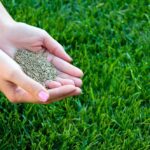Wood treatment includes a series of processes aimed at making this material “alive” perfectly suitable for making furniture, bathroom furnishings and parquet floors. Let’s start with a clarification, namely the fact that the log, just cut, contains high percentages of water. The humidity of a green trunk can be between 50 and 300%. It all depends on the quality of the plant and the habitat in which it grew, but even assuming we have a trunk with the minimum percentage of humidity, we could not say that we have the optimal tables for the creation of fine furniture and furnishings. As soon as the trunk is cut, it begins to “release” moisture, free water that leaves the cellular lights causing a loss of weight, but no decrease in volume. The latter occurs when the percentage reaches around 30%, or the saturation point of the cell walls. From that moment on, any further loss of water vapor will also generate the re-formation of the wood, as the wood will begin to release the water bound to the cell walls.

What risks in wood with high humidity percentages
A trunk with humidity percentages higher than 18% presents high percentages of risk of being attacked by fungi and insects, but also to the possibility of cracks and swelling. Fungal attacks and those of other insects are due to the presence, in the woody material, of water, oxygen and sugars. These three elements represent a real “invitation” for unwanted guests of the wood, and by eliminating even one of them we will be able to make the material unattractive. To do this, you can use chemicals, such as boron salts, creosote or copper sulphates, or use natural processes, such as heat treatment. The main criticality of the chemicals used to poison the sugars present in the wood fibers is due to the fact that they are toxic products also for humans, while the thermo treatment (thermowood) allows to have an unassailable material and at the same time safe for human health.
But it’s not just fungi and bacteria that make a log with high percentages of humidity unattractive. In fact, even the colors will be different in the various points based on the amount of steam contained, thus originating furnishings with uneven colors.
Vaporization of wood, why is it important?
We have said that a log of wood can reach humidity percentages of about 30% if left in its natural state after cutting. But we would never have a constant amount of water vapor along the entire trunk and there will be points where this level will be 30% and others where it can reach even 50%. This is why, before carrying out a perfect drying of wood, it is essential to uniform the percentage along the entire piece of wood to be treated. To do this, it is possible to insert the logs inside special chambers and spray them with steam through perforated pipes placed under the stacks.

Wood drying, what are the advantages?
Thermally modified wood is also lighter, free of resins and pleasant to the touch, characteristics that make it particularly appreciated for companies that make furniture and furnishings. Thermo-treatment is therefore a natural process that subjects the wood to a drying cycle at temperatures between 165 ° and 220 ° C in a controlled, oxygen-poor atmosphere. A perfectly dried wood will be able to give life to furnishing objects destined to inalterability over time.
To achieve this result it is necessary to proceed with the drying of the wood, which can be natural or artificial. In the first case the stacks will be left in places sheltered from humidity where a constant air exchange is guaranteed, while in the second case the stacks will be placed in special electronically controlled rooms and brought to the desired drying level in 2/3 days. . A decidedly short time, if compared to the very long times necessary for artificial drying (it may take a few years), which also allows for an ideal technical humidity to start the logs for various processes.






